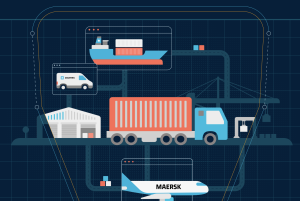 In a previous article, Ben Goldwasser, Business Development Professional, Spendrix, discussed how to spot risky behaviour when communicating with suppliers. In this month’s SmartProcurement, Goldwasser identifies supplier risk and explores what to look out for during on-site evaluations. This is specifically beneficial in the transportation and logistics industries when visiting carriers in person. While on-site evaluations are not a requirement, visiting carriers can help you to build better relationships and to improve communication. Also, visiting carriers on-site allows you to evaluate them for risky behaviour that could potentially affect your company.
In a previous article, Ben Goldwasser, Business Development Professional, Spendrix, discussed how to spot risky behaviour when communicating with suppliers. In this month’s SmartProcurement, Goldwasser identifies supplier risk and explores what to look out for during on-site evaluations. This is specifically beneficial in the transportation and logistics industries when visiting carriers in person. While on-site evaluations are not a requirement, visiting carriers can help you to build better relationships and to improve communication. Also, visiting carriers on-site allows you to evaluate them for risky behaviour that could potentially affect your company.
Here are some things to look out for the next time you visit a carrier on-site:
Training capabilities
When you originally vet your carriers, you ensure that they are qualified to do the job at hand, right? A part of this vetting process includes ensuring that your carriers’ employees are proficient. Therefore, when arriving on-site, it is important to check out carrier training capabilities.
Top carriers will have dedicated classroom space, well-thought-out training courses and experienced instructors. When you are on-site, simply ask to review their training courses to get an idea of how well these are preparing your carrier’s employees to work with your company. Does training cover how to properly perform pre-trip inspections, how to properly secure cargo, or what to do in cases of emergency? According to a 2011 Commercial Vehicle Safety Alliance study, the most prominent securement violations are “failure to prevent shifting cargo” and “leaking/spilling/blowing/falling cargo”. Ensuring that drivers are properly trained to handle securement and deal with emergencies are critical to your business.
Furthermore, if your carrier cannot answer simple questions about their training programme or it seems that their courses lack substance, you may need to ask yourself if said carrier is the best fit for your company. Overall, your carriers represent less risk to your business the better their employees are trained.
Properly stored and inspected equipment
Another crucial risk factor to look out for during on-site evaluations is how your carriers store their equipment, spare parts and securement tools. The way that a carrier stores excess equipment can tell you a lot about their attention to detail and the value that they place on having their over-the-road equipment be in excellent condition.
While on-site, have a look at their inspection areas. Inspection areas should be well-lit and have spare chains/straps to replace defective securement. It is important that carriers are taking all measures to minimise violations and damage during hauls.
In addition to securing cargo, also evaluate how well carrier equipment is being maintained. Are tractors and trailers assessed for potential damage, parked in an organised and safe location, and repair areas kept clean? How promptly are mechanical issues taken care of? Are spare parts well organised and in safe locations for mechanics to access them? Carriers that do not properly maintain their equipment can put your company at serious risk.
If a carrier fails to secure cargo, or neglects their fleet, their number of breakdowns and violations will soar; directly influencing your business.
Visual inspections of equipment
In addition to how a carrier stores their equipment, do they keep their fleet up to date and safe? When performing an on-site evaluation, take the opportunity to perform your own assessment of your carrier’s equipment for physical damage. Identify things that could lead to supplier error and thus put your business at risk. Check tyres for adequate tread and proper inflation. Inspect trailers for any internal or external damage. Also ensure that securement equipment is functioning properly. Evaluate cabs to confirm that they are safe for the driver and free of excessive distractions.
Ensuring your carrier properly maintains their fleet can help to dramatically reduce the potential for errors. Therefore, it is crucial while on-site to inspect your carrier’s equipment and, in turn, protect your business.
Proper compliance
A final way to minimise risk when performing an on-site evaluation of your carrier is by inspecting how they handle compliance. Does your carrier maintain organised and up-to-date logbooks? Do they have a detailed understanding of their drivers’ hours of service and do they work towards avoiding violations? Also, have they had any recent drug or alcohol violations? Or, even worse, are there any drugs or alcohol on-site?
By evaluating your carriers for compliance issues, you are communicating your company’s values. You can also spot risky behaviour before such dramatically influences your company.
Overall, on-site evaluations allow you a closer look at your carriers’ day-to-day practices and help to determine whether carriers are the best fit for your company. If your carriers do not have an effective training programme, properly store or maintain their equipment, or follow proper compliance protocol, it may be time to look elsewhere for your transportation and logistics needs.


























